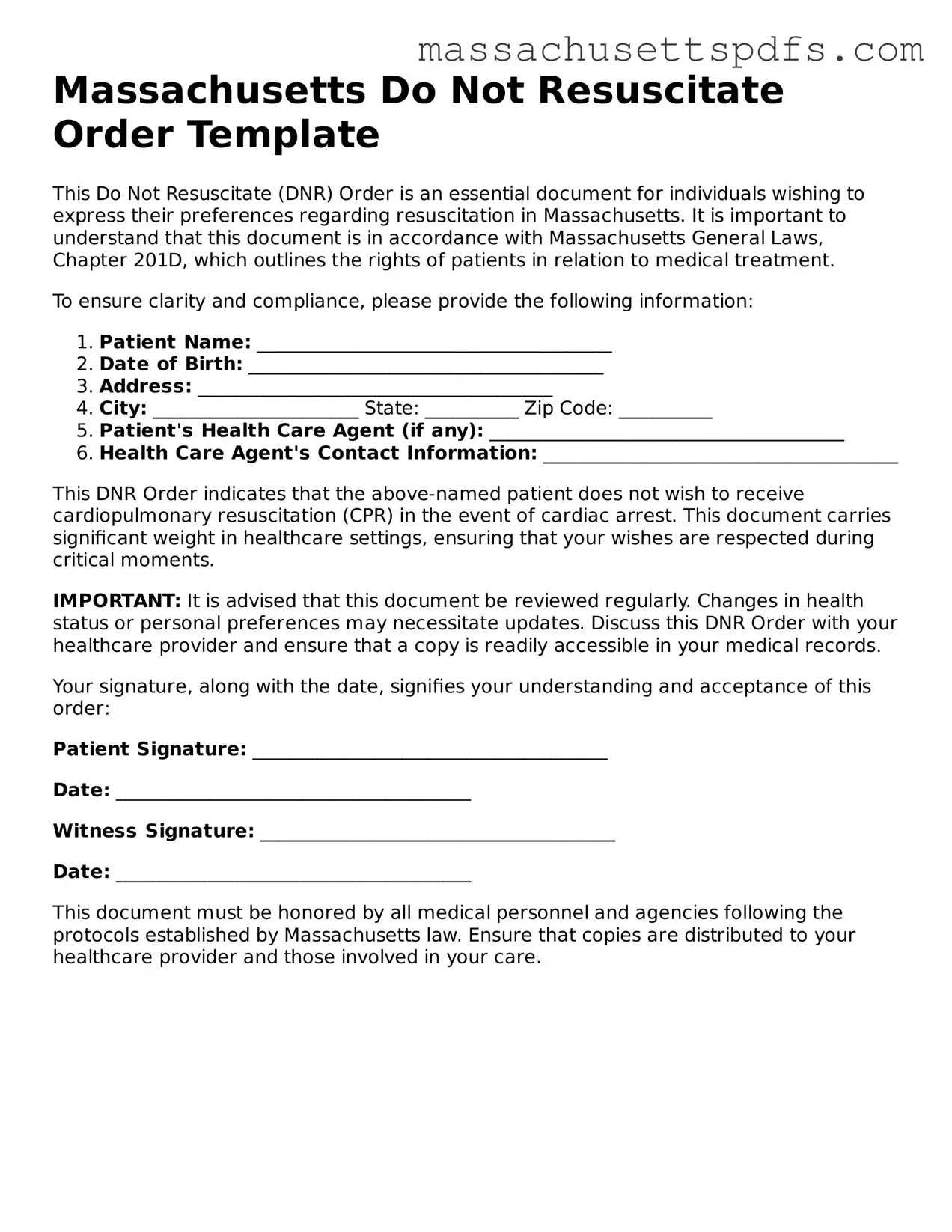Attorney-Approved Massachusetts Do Not Resuscitate Order Document
A Do Not Resuscitate (DNR) Order in Massachusetts is a legal document that allows individuals to refuse resuscitation efforts in the event of a cardiac arrest or respiratory failure. This form is essential for those who wish to ensure their end-of-life wishes are respected in a medical emergency. Ready to take control of your healthcare decisions? Fill out the form by clicking the button below.
Launch Editor Here
